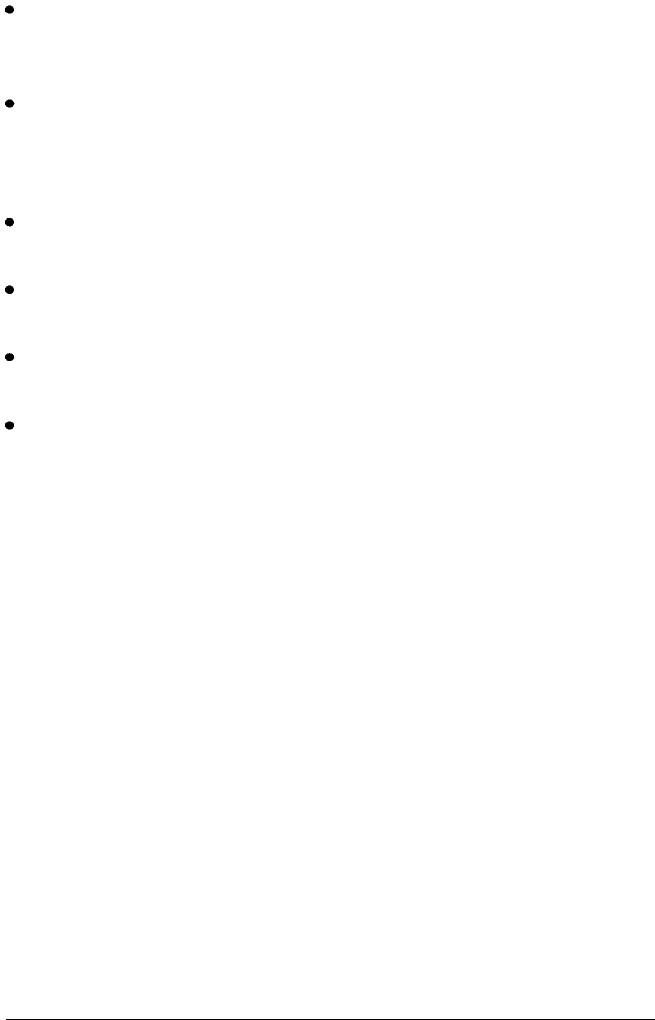
WARNING: Connect all your peripherals before you plug in the
power cable. After you plug in the power cable,
always turn off the power switch before you connect
or disconnect any peripheral.
Voltage switch. Leave this switch at 115V for USA and Canadian use.
Slide the switch to the right to select 230V for use in other countries (as
necessary).
AC OUTLET Auxiliary power outlet. You can plug some monitors
(and other types of peripherals) into the main unit here, instead of a wall
outlet. The main unit’s power switch controls the monitor or peripheral
connected to this outlet.
AC INLET Plug the power cord into the main unit here. Be sure the
power switch is off when you plug the power cord into an outlet.
Parallel port. Lets you connect a peripheral with a parallel interface, such as
a printer or a plotter.
Serial port. Allows you to connect a peripheral with a serial interface, such
as a modem, another computer, or a printer.
Option card access slots. The Equity II+ has six slots to hold up to six
option cards. Option cards allow your computer to control your peripherals
or enhance your computer’s performance. One option card slot holds the
parallel and serial interfaces as well as the floppy disk controller. If your
Equity II+ has a hard disk, a hard disk controller card occupies another
option slot. You also need to use one or more slots for the video card(s) you
purchased for your monitor. You can use the other slots to install additional
options, such as a memory expansion card.
4
Connecting the Power Cord
Insert the power cord into the AC power inlet on the left side of the
back panel, as shown in Figure 1-4. To avoid an electric shock, be sure to plug
this end into the main unit before plugging the other end into the wall socket.
For now, do not plug the power cord into an electrical outlet.
1-6
User’s Guide


















